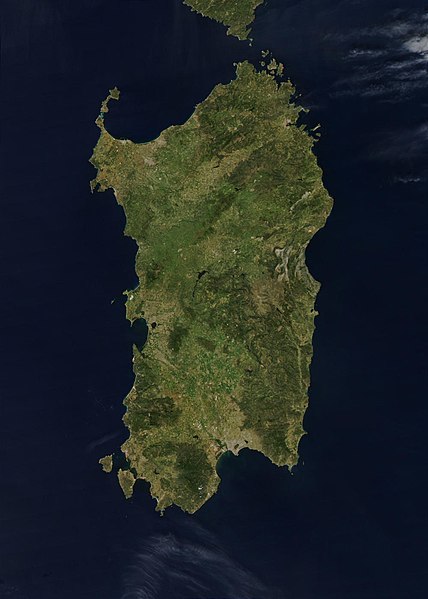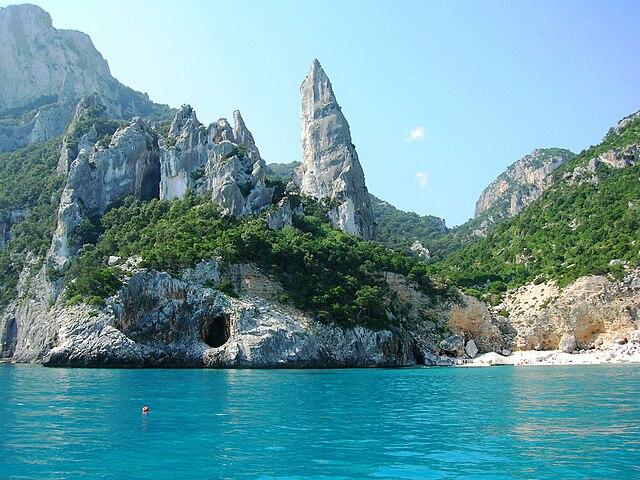Aragonese conquest of Sardinia
The Catalan-Aragonese conquest of Sardinia took place between 1323 and 1326. The island of Sardinia was at the time subject to the influence of the Republic of Pisa, the Pisan della Gherardesca family, Genoa and of the Genoese families of Doria and the Malaspina; the only native political entity survived was the Judicate of Arborea, allied with the Crown of Aragon. The financial difficulties due to the wars in Sicily, the conflict with the Crown of Castile in the land of Murcia and Alicante (1296-1304) and the failed attempt to conquer Almeria (1309) explain the delay of James II of Aragon in bringing the conquest of Sardinia, enfeoffed to him by Pope Boniface VIII in 1297.
Alfonso of Aragon, Santa Maria del Mar, Barcelona
Sardinia is the second-largest island in the Mediterranean Sea, after Sicily, and one of the twenty regions of Italy. It is located west of the Italian Peninsula, north of Tunisia and immediately south of the French island of Corsica.
The island of Sardinia as seen from the International Space Station
Sardinia
Strait of Bonifacio. The southern coast of Corsica can be seen from Santa Teresa Gallura.
Cala Goloritzé, Baunei





